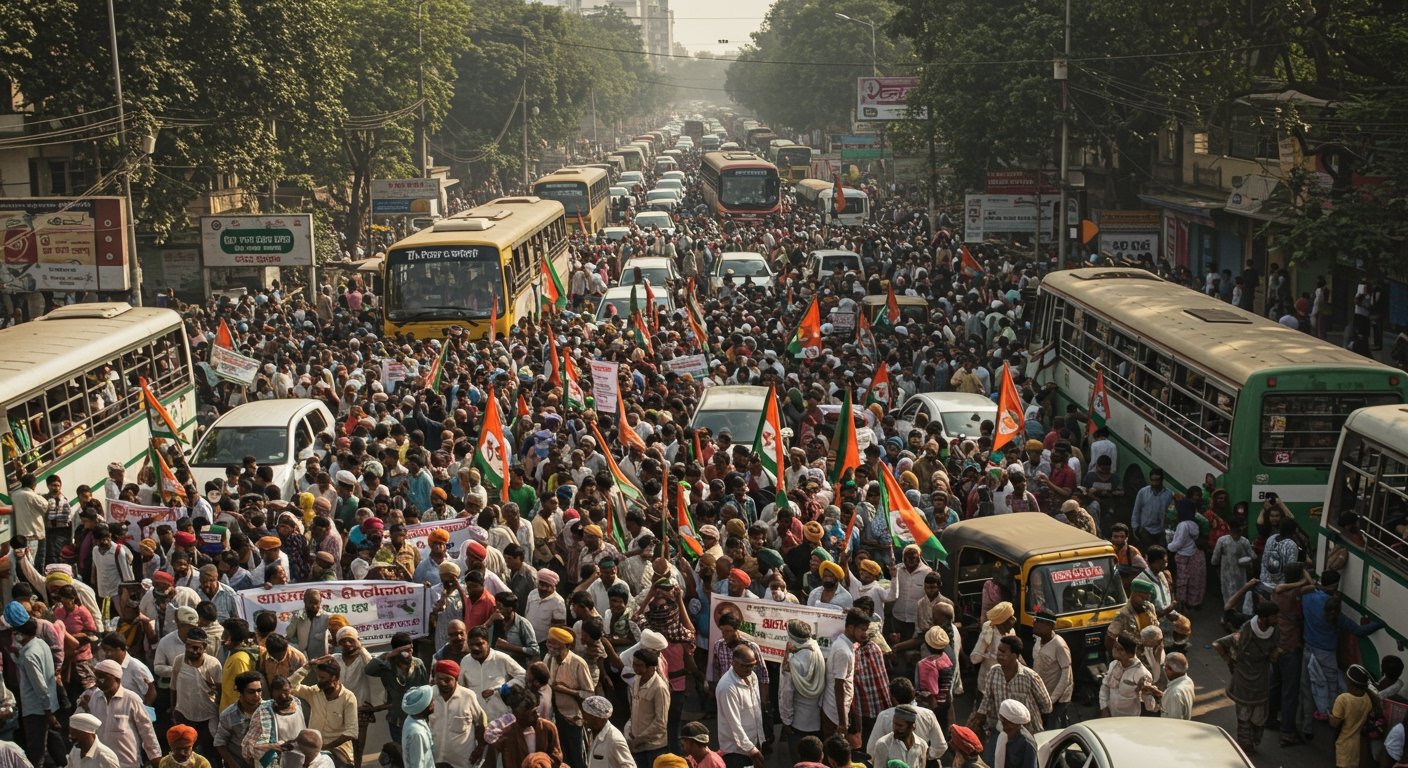NEW DELHI, India — A monumental Bharat Bandh, or nationwide strike, has brought large parts of India to a standstill today, July 9, 2025. The coordinated action, involving an estimated 25 to 40 crore workers and farmers, represents a powerful protest against the central government’s labor and agricultural policies, according to organizers.
The strike, backed by a coalition of ten central trade unions, has presented a 17-point demand charter to authorities, outlining grievances and calls for significant policy revisions. The vast scale of participation has led to widespread disruption across vital sectors.
Widespread Economic Disruption
The economic impact of the Bharat Bandh is being felt acutely nationwide. Essential services have been significantly affected, impeding daily life and commerce. Among the hardest-hit sectors are transportation, banking, postal systems, and power supply.
In the western state of Gujarat alone, approximately 20,000 bank employees reportedly joined the strike, leading to the potential disruption of around ₹15,000 crore in daily financial transactions. This highlights the significant ripple effect the protest is having on the national economy.
Major metropolitan centers also experienced substantial disruption. In cities like Mumbai and Bengaluru, metro and bus services saw partial suspensions, creating significant challenges for daily commuters. While schools and offices largely remained open, the impact on public transport networks meant that commuters encountered substantial delays, struggling to reach their destinations.
Union Demands and Policy Grievances
The ten central trade unions spearheading the Bharat Bandh have unified around a 17-point demand charter. While the full details of each point were not immediately available, the overarching theme is a deep dissatisfaction with recent central labor and agricultural policies enacted or proposed by the government. Union leaders argue that these policies are detrimental to the rights and livelihoods of workers and farmers across the country.
Protesters contend that the new labor codes, which consolidated various previous laws, dilute workers’ rights regarding job security, wages, and collective bargaining. Simultaneously, farmers’ unions have voiced concerns over agricultural reforms, fearing they could weaken minimum support prices, dismantle traditional markets, and increase corporate control over farming.
Regional Impact and Participation
The strike’s intensity has varied by region, but its nationwide footprint is undeniable. From the industrial belts to agricultural heartlands, participation rates have been notably high, reflecting broad-based discontent. While specific figures for all states were still being compiled, the estimated 25-40 crore participants underscore the magnitude of the protest.
Reports from various states indicate that the strike’s effects were particularly pronounced in sectors with strong union presence, such as banking and state-run transportation. The disruption to power supply, while not explicitly detailed in terms of scale, suggests an impact on industrial and possibly residential consumers.
Government Response and Future Outlook
The central government has yet to issue a comprehensive statement addressing the Bharat Bandh and the unions’ 17-point demand charter. Observers anticipate that the scale of the protest will necessitate a response, though the nature and timing remain uncertain.
The Bharat Bandh on July 9, 2025, serves as a powerful demonstration of collective action by India’s vast workforce and farming community. Its success in disrupting key services and highlighting grievances surrounding central labor and agricultural policies is likely to shape future dialogue between the government and these powerful representative bodies. The long-term implications for policy-making and labor relations in India will unfold in the coming days and weeks as the government assesses the impact of this major nationwide protest.





